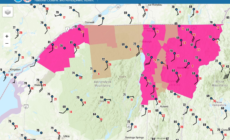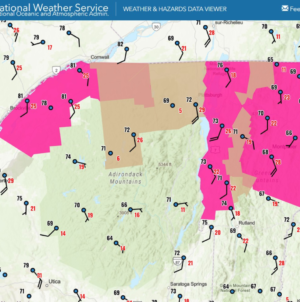-
Red Flag Warnings Issued in These States: What To Know - 17 mins ago
-
Sam Rivers, Bassist for Limp Bizkit, Dies at 48 - 19 mins ago
-
Healthcare workers strike at Kaiser Permanente ends after 5 days - 23 mins ago
-
Panthers’ Bryce Young Exits Game With Worrisome Ankle Injury - 54 mins ago
-
U.S. Kills 3 on Boat Suspected of Smuggling Drugs for Colombian Rebels - about 1 hour ago
-
College Football Program Fires Coach After 12-Point Loss - about 1 hour ago
-
A Fragile Cease-fire Between Afghanistan and Pakistan Ends Violence, for Now - 2 hours ago
-
Dodgers’ Mookie Betts Sends Message to Brewers After NLCS - 2 hours ago
-
Epoch Times Reporter Resigns After Publication Signs Pentagon Rules - 3 hours ago
-
Florida Fires Billy Napier After Two-Point Win - 3 hours ago
NOAA Map Shows Winter Weather for Each State
A new outlook issued by the Climate Prediction Center (CPC), a branch of the National Weather Service (NWS), has revealed what conditions can be expected across the United States during the upcoming winter months.
Why It Matters
The NWS recently announced that La Niña conditions have been detected and are expected to continue from December 2025 to February 2026.
La Niña is the cool phase of a natural, recurring climate cycle known as the El Niño-Southern Oscillation (ENSO). The other phase is El Niño, which is the warm counterpart. Both can have a global impact on weather, wildfires and ecosystems.
Although La Niña is expected to remain weak, the NWS said it could still influence the upcoming winter season.
What To Know
According to the CPC’s outlook for the December 2025 to February 2026 period, the areas most favored to see above-average temperatures during this window include central and southern Florida, parts of central and southern Arizona, southwestern New Mexico, and far west Texas.

States that could see below-average temperatures include parts of Washington, Idaho, Montana, North Dakota, and Minnesota.
States with equal chances of above- or below-normal temperatures included:
- Maine
- New Hampshire
- Vermont
- Ohio
- Indiana
- Illinois
- Missouri
- Kansas
In terms of precipitation, Idaho, Montana, and Wyoming were among the states with areas most likely to see above-average levels from December to February, according to the map.
Parts of Ohio, Indiana, Michigan, Kentucky, and Illinois could also see more precipitation than usual, though this was given a lower probability.

Meanwhile, areas of Florida, Georgia, Alabama, and South Carolina are forecast to see drier-than-normal conditions this winter.
Parts of the Northeast, as well as West Virginia, Oklahoma, Nebraska, Kansas, Colorado, Nevada, Utah, and California had equal chances of either above- or below-normal precipitation, according to the map.
What People Are Saying
The National Weather Service forecast office, Twin Cities, Minnesota, said in an X post on Thursday: “The official NOAA Winter outlook was released today! With a La Niña expected to persist into the winter, the CPC has shown a SLIGHT favoring toward seeing below normal temperatures and above normal precipitation in MN & WI for this upcoming winter.”
NWS Aberdeen, South Dakota, said in an X post on Thursday: “The official U.S. Winter Outlook has been released! Due to the influence of La Niña odds favor a cooler and wetter December-January-February for the Northern Plains!”
NWS Bismarck, North Dakota, said in an X post on Thursday: “The official Winter Outlook has been released! A colder and more active winter is favored for western and central North Dakota, with La Niña conditions ongoing.”
What Happens Next
Meteorological winter begins December 1 and runs through February.
Local forecast updates are issued by regional NWS branches on the agency’s website and social media channels.
Source link




















